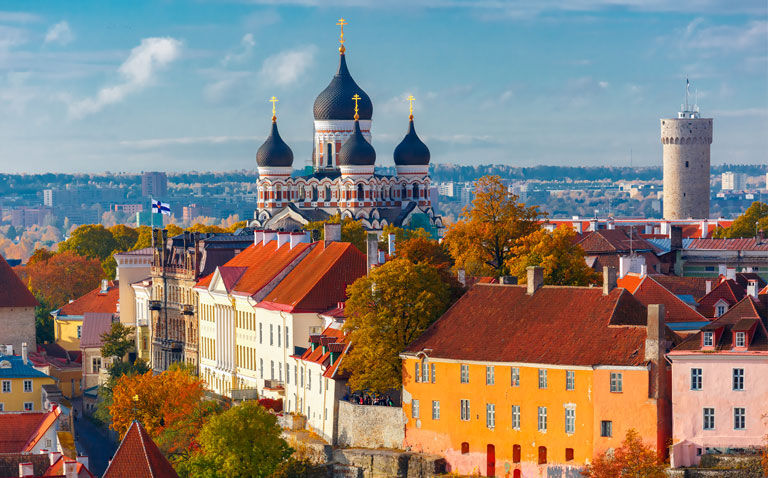Dr Urmas Sule, HOPE president, details how Estonia has weathered the significant challenges of 2022 and his hopes and expectations for 2023.
What were your key objectives and successes for 2022 in Estonia, and what were the main drivers for these?
In 2022, we moved from Covid-19 to an energy crisis and the uncertainty of war. Unfortunately, Covid is still very much present. Managing one crisis after another, and sometimes doing it simultaneously, proves a challenge for maintaining a reasonable balance of healthcare services for Covid and non-Covid patients. In my opinion, we have succeeded in guarding the patients’ interests and safety the best way.
Were there any specific facilitators that made these objectives more achievable?
During these difficult times, we saw how important it was to have smooth cooperation between hospitals and healthcare providers. An effective distribution of tasks and responsibilities was developed to protect patients’ interests in the best possible way.
We as hospital managers cooperate well with the Health Board, the Health Insurance Fund and the Government of Estonia. Continuous negotiations with the Government and the Health Insurance Fund about adequate financing of services and support for the health sector were necessary and proved very fruitful.
Our partnership with the Estonian Medical Association, the Medical Faculty of the University and the Health Care Colleges has been a big help in involving medical and nursing students.
Our main focus for 2022 was, and will always be, to protect our healthcare workers from burnout. This is not an easy task and needs good cooperation between all partners.
What did you perceive as the main barriers to reaching these goals?
Similar to other European countries, Estonia also faces the problem of a shortage of healthcare workers. Healthcare specialists are working for multiple employers. This is good for knowledge exchange, but is difficult to organise in a pandemic situation. Shortages have been a problem in Estonia for a long time, not just during Covid. The pandemic intensified the problem. Ensuring a reasonable division of labour and responsibilities between hospitals and other healthcare institutions has been a challenge.
But there are also other barriers, too. Political priorities have shifted from solving the healthcare crisis to an energy crisis and the effects of war. The primary focus has been improving readiness for emergencies in all areas. Helping Ukrainian refugees, providing them with social security and healthcare services is one of the important and ongoing challenges.
How did you anticipate overcoming any of these potential barriers?
The Estonian Government created a new crisis staff structure during Covid. This structure was adapted for the healthcare sector together with the Estonian Hospitals Association network. We have collaborated with the Estonian Health Insurance Fund to guarantee the best possible availability of healthcare services to all patients. This has been possible due to the prudent and flexible planning and financing of services.
To motivate employees, we have negotiated collective agreements in two-year increments. This has been a good opportunity to hear the needs and expectations of healthcare workers so we can do our best to try to meet those expectations and improve working conditions. Negotiations for the coming years are currently underway, and we will make all efforts to find a balanced agreement and retain the effective and trusting relationships among our social partners.
What measures did you use to assess whether these objectives were achieved?
The Health Insurance Fund measures the need for health services to lessen the treatment deficit. In collaboration, we have negotiated and agreed on the measures to reduce treatment deficits for non-Covid patients. We planned and introduced new services to prepare for Ukrainian refugees entering the healthcare system. But the biggest challenge for hospitals is the rapid and continuous rising costs of energy and other services.
We have monitored hospitals’ workloads and cooperated to ensure best use of all resources – especially the healthcare workforce – to create a flexible system that is prepared for new challenges.
How did these lead to improvements in patient care?
We have seen a rapid growth of the development and use of e-services and remote services and consultations in the healthcare sector in Estonia. There has been great development across many specialities – psychiatry, for example – during the pandemic. This has been possible due to the collaboration between hospitals, other healthcare providers and the Health Insurance Fund.
Because of the health crisis, we have increased infection control capacity and knowledge, not only in the healthcare sector, but also in society. A nationwide vaccination campaign has also alleviated the effects of Covid and the burden on the healthcare system.
What are the goals and challenges in Estonia for 2023, and are these contingent on the 2022 objectives?
We are negotiating the 2023/24 collective agreement with the Medical Association, Nurses Association and other trade unions. It is a challenge to achieve a balance between reasonable salaries and general pricing principles that include all input prices and guarantee adequate availability of patient services.
At the same time, our healthcare system has to achieve the best possible flexibility to be prepared for any possible crises. This seems like an endless and boundless task!










